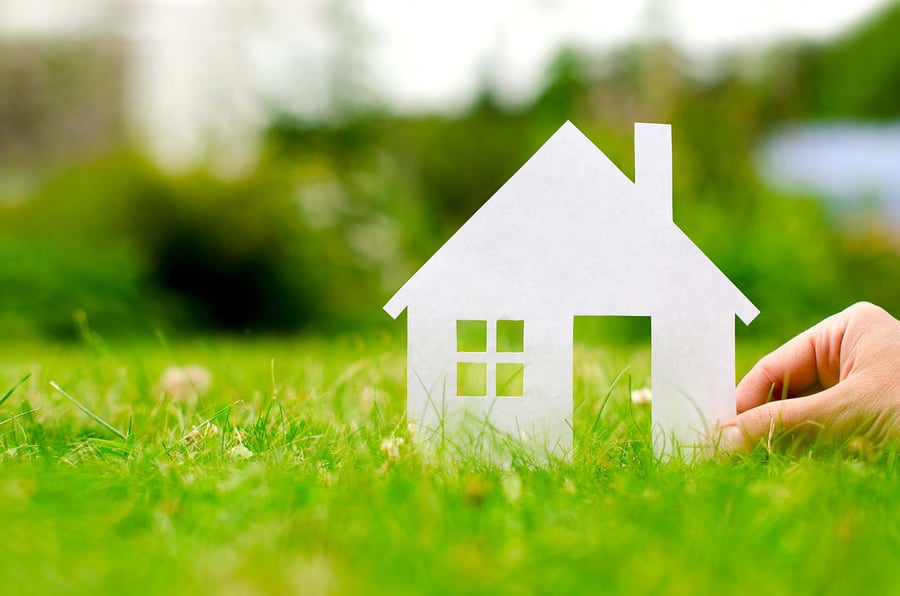
Replace single-use plastics with reusable items. Switch to LED lightbulbs. Turn off appliances and lights when not in use. So many tips on what you can and should do to “go green.” And a quick Google search on “tips for going green at home” will produce endless pages of tips and recommendations for making your life more environmentally friendly. Tips and recommendations are great, but the act of putting them into practice is what truly makes the difference. In a short sustainability blog series, we will share stories from several GTN employees who have prioritized sustainability by altering their lifestyles and adopting climate-focused habits.
Our first sustainable story is from Katie Burg, Client Service Professional located in Denver, CO. Over 15 years ago, Katie began her green journey with the purchase of reusable cloth shopping bags and her passion for sustainable living has grown ever since.
 Over time, small changes can have a huge impact. This is a passion of mine—making small changes that can have huge environmental impacts. My “green” story has evolved over the years and is still a work in progress, but this is typical given the complexity and magnitude of the climate crisis.
Over time, small changes can have a huge impact. This is a passion of mine—making small changes that can have huge environmental impacts. My “green” story has evolved over the years and is still a work in progress, but this is typical given the complexity and magnitude of the climate crisis.
My sustainable journey began over 15 years ago when I decided to spend $5 on reusable cloth shopping bags. Because I am frugal by nature, this was a hard decision. Do I really need to spend money on something I can get for free? But I was tired of the big pile of plastic bags in my cabinet and decided to take the leap.
In the end, this single, seemingly small decision had a huge impact, eventually leading our family to cut out most single-use plastics from our lives. These days, I always carry a reusable water bottle, and when shopping, I make conscious decisions to look for products that don’t have wasteful packaging. Most of the changes we have made regarding single-use plastics have saved us money in the long run and have had a positive environmental impact by not further contributing to plastic waste. And making these changes hasn’t had any negative impact on our daily lives; we simply replaced a single-use item with a reusable one.
Besides reducing wasteful plastic, I am also extremely passionate about lowering our consumption of electricity. In 2018, we invested in solar panels and with the installation of the panels, we made four significant changes to our household electricity use.
-
- Reduced our overall energy consumption. With the solar panels, we received an online app that showed our energy usage in real-time. This proved to be a real game changer. After seeing how much electricity our dryer used, we immediately stopped using it and now hang dry everything—outside on a clothesline in the summer, drying racks indoors in the winter. We still use the dryer for certain items, but overall, by making this change, we’ve cut our dryer usage from 7 hours per week to under 30 minutes per week. A huge difference in energy consumption!
- Unplugged electronic devices. A TV is a huge electricity vampire, so we put our TV, sound bar, and game system on a power strip. When we aren’t using the TV, the power strip is turned off. The only “negative” is now we must bend down and turn the power strip on and off to use the equipment—a small price to pay to reduce our electricity consumption.
- Installed a whole house fan. This significantly cut down on our air conditioner use. Utilizing our whole house fan during the evening and in the early morning hours along with ceiling fans during the day keeps our house cool without air conditioning.
- Swapped out incandescent light bulbs to higher efficiency LED bulbs. We didn’t realize we still had incandescent light bulbs, but one night the lights were on in the dining room, and we couldn’t figure out why our energy usage (using our online app) was so high at that moment. After a few minutes of turning things off and on, we discovered that the dining room fixture was where the excess usage was coming from. Once we identified the source, those last remaining incandescent bulbs were changed immediately.
Like stopping our usage of single-use plastic, making these four energy changes hasn’t added more “chore” time to our daily lives, but because of them, we now make enough electricity from the sun year-round to cover our needs and add to the electrical grid.
Our solar panels have also helped with our transportation. In 2017, we purchased an electric car to replace one of our gas-powered vehicles. This has been my favorite change because, besides being fun to drive, I save time by never having to stop at a gas station. And since we get all our electricity via the solar panels, we pay very little to operate the vehicle. There are some downsides to an electric car like the limitation on number of miles you can drive on one charge, but the pros far outweigh any of the downsides.
My green journey continues to evolve. We are currently working hard to reduce our food and household waste. We’ve found meal planning and making more food from scratch has really helped with this. Anne-Marie Bonneau, author of the blog Zero Waste Chef, summed up this journey for me. She said, “We don’t need a handful of people doing zero waste perfectly. We need millions of people doing it imperfectly.” I am one of the millions doing it imperfectly. You can too.
Sustainability takes time, but we can all start small and build on it. By being aware and incorporating eco-friendly practices into our daily lives, we can all play a part in tackling the climate crisis together. You can begin by making just one small change.




